Bologna City Guide

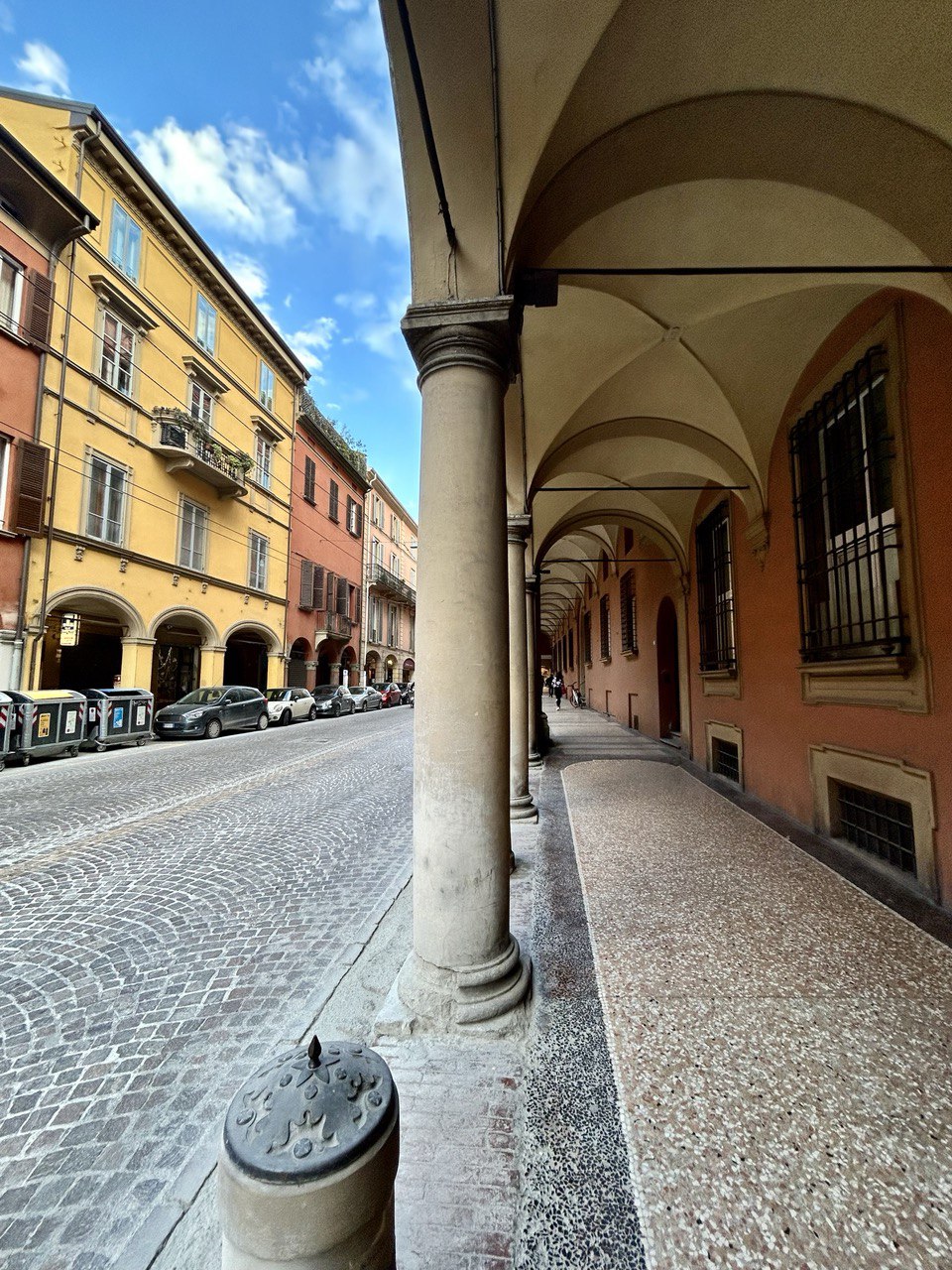
City of Porticoes
City of art, culture and commerce, with a streamlined trade-fair organization and a well-known manufacturing and motor tradition, Bologna is famous for its almost 40 km of arcades (Porticoes), the longest in the world.
Bologna is officially the "City of Porticoes" following its nomination as a UNESCO World Heritage Site, as announced on 28 July 2021 directly from Fuzhou in China. The inscription is a new recognition by UNESCO for the city of Bologna, which had already been declared Creative City of Music in 2006.
City of Porticoes
City of art, culture and commerce, with a streamlined trade-fair organization and a well-known manufacturing and motor tradition, Bologna is famous for its almost 40 km of arcades (Porticoes), the longest in the world.
Bologna is officially the "City of Porticoes" following its nomination as a UNESCO World Heritage Site, as announced on 28 July 2021 directly from Fuzhou in China. The inscription is a new recognition by UNESCO for the city of Bologna, which had already been declared Creative City of Music in 2006.

La Dotta
Also called The Learned ("La Dotta") for its old University, and The Fat ("La Grassa") for its food tradition, the city is also a “UNESCO creative City of Music” and has one of the largest and most well-preserved medieval historical centres, full of restaurants, taverns, theatres and shops.
Home of many famous artists such as Giorgio Morandi, Guido Reni, the Carraccis, Guercino, Aspertini, its charm has also charmed notable people like Mozart, Carducci, Dante, Rossini and Guglielmo Marconi, winner of the Nobel Prize in Physics.
Rich in art and history, Bologna will amaze the visitor in all seasons, with its enjoyable and lively summer atmosphere or with the magic of Christmas illuminations.
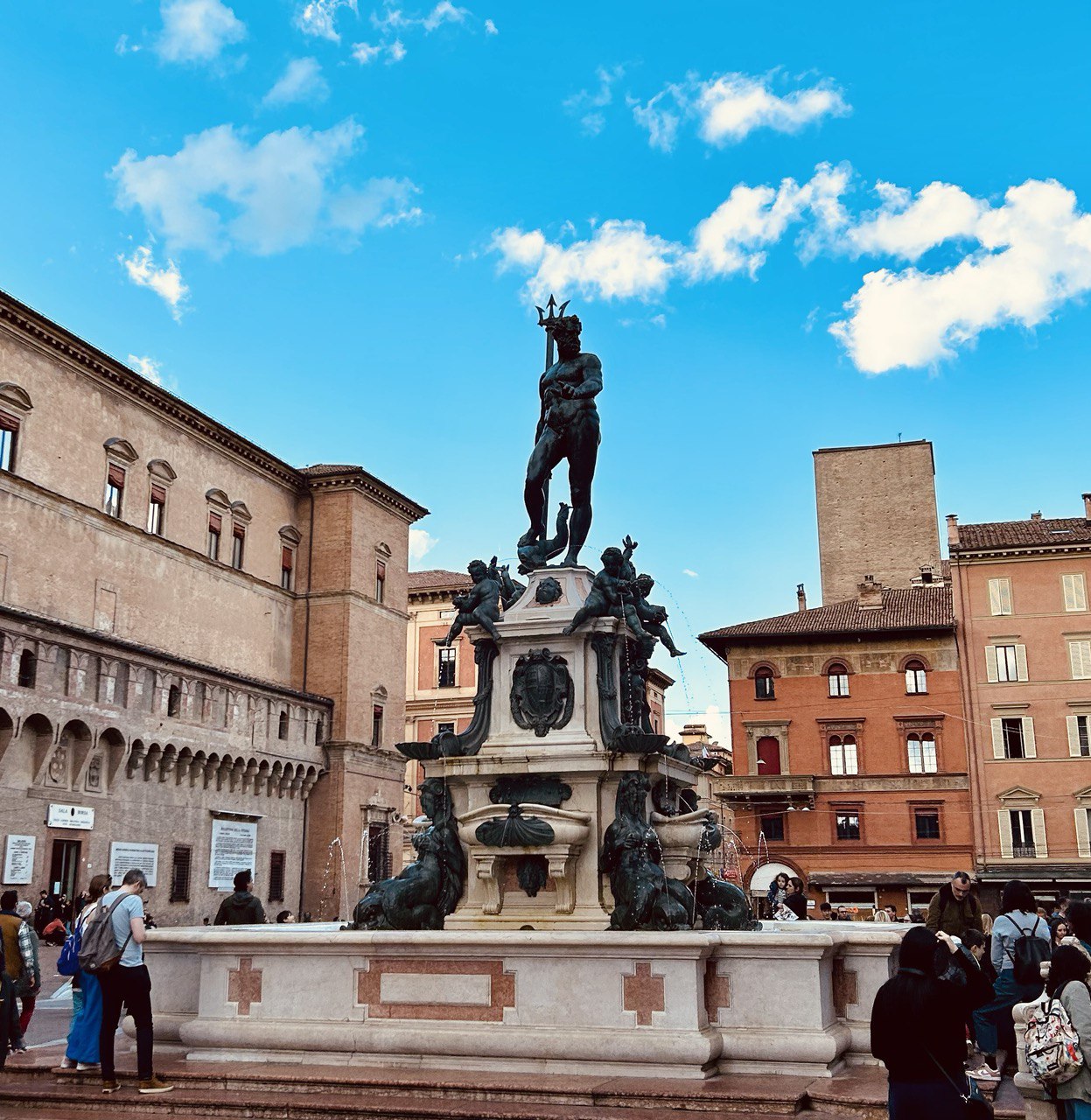
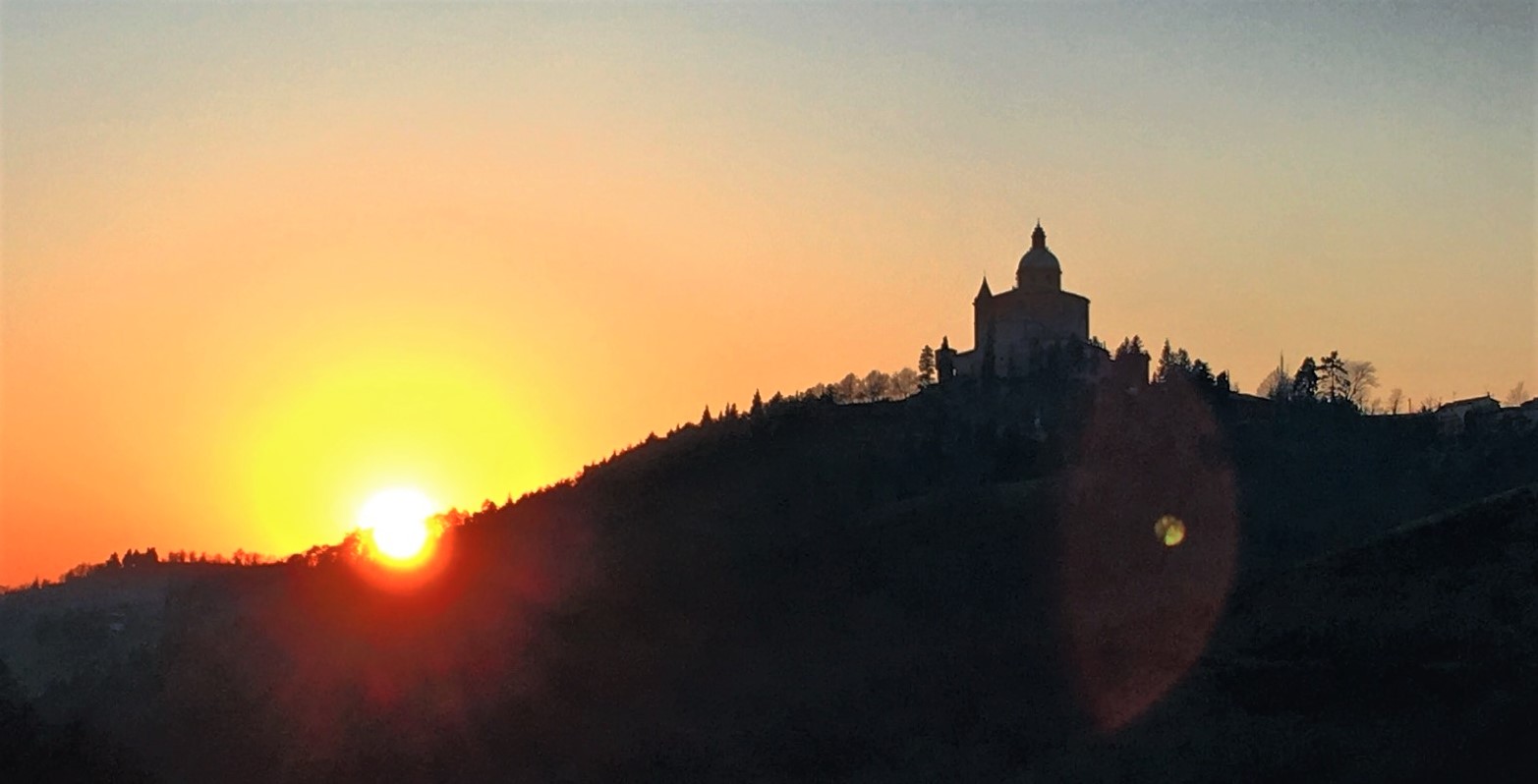
Symbols of Bologna
Among the symbols of Bologna there are:
The Sancturay of Beata Vergine di San Luca, located on Colle della Guardia. For Bologna inhabitants, the Sanctuary is the dearest and most revered place, as well as a comforting visible “landmark” when approaching the city. It can be easily reached either on foot walking along the longest arcade of the city (about 4 km) or by shuttle bus.
Symbols of Bologna
Among the symbols of Bologna there are:
The Sancturay of Beata Vergine di San Luca, located on Colle della Guardia. For Bologna inhabitants, the Sanctuary is the dearest and most revered place, as well as a comforting visible “landmark” when approaching the city. It can be easily reached either on foot walking along the longest arcade of the city (about 4 km) or by shuttle bus.

Made of marble and bronze, the Fountain of Neptune was built by the Flemish Giambologna to a design by Tommaso Laureti between 1563 and 1566. It is the symbol of papal power.
The medieval towers, particularly the magnificent Two Towers: Asinelli tower (98 m) and its neighbouring “twin” Garisenda (48 m) characterized by a steep slope that made it unusable for military purposes.
Because of its stooped appearance Dante Alighieri mentioned it in the Divine Comedy (Inferno) comparing it to Antaeus.


Alma Mater Studiorum
Alma Mater Studiorum is the oldest Western University. Its first prestigious seat was the Archiginnasio, whose walls are decorated with the coats of arms of the students. Here it is possible to visit the Anatomical Theatre, where practical lessons of cadaver dissection took place in the past.
Alma Mater Studiorum
Alma Mater Studiorum is the oldest Western University. Its first prestigious seat was the Archiginnasio, whose walls are decorated with the coats of arms of the students. Here it is possible to visit the Anatomical Theatre, where practical lessons of cadaver dissection took place in the past.

Along the ancient streets and endless porticoes, a totally unexpected wonder are then the canals dating back to the 12th century that can also be visited in the underground routes.
Getting lost in the most characteristic streets of Bologna is the best way to visit the city, breathing directly into the traditional atmosphere and folklore of the Emilia Romagna given by the warm colors of the buildings, the scents of typical food and the sweet sound of the Bolognese dialect. Be inspired by the curiosities of these streets and enjoy a pleasant stroll through the history and culture of Bologna!


Little Venice and Underground Bologna
The main canals of Bologna are Savena and Reno canals, the Navile canal, the Cavaticcio canal and the Moline canal. While the Cavaticcio canal is now visible in the park of the same name, the Moline canal - which in the twelfth century provided energy for about 15 mills in the city - is now visible from the famous window in via Piella, near via Oberdan.
This corner of the city is now famous as little Venice, one of the most beautiful canals in the city together with the via Della Grada lock. A place to stop and admire the beauty and splendor of what was once one of the most important cities in the world thanks to its splendid navigable canals. The rest of the canals were buried during the great post-war urbanization work that hit The Learned (La Dotta), but despite this it is still possible to visit it
Little Venice and Underground Bologna
The main canals of Bologna are Savena and Reno canals, the Navile canal, the Cavaticcio canal and the Moline canal. While the Cavaticcio canal is now visible in the park of the same name, the Moline canal - which in the twelfth century provided energy for about 15 mills in the city - is now visible from the famous window in via Piella, near via Oberdan.
This corner of the city is now famous as little Venice, one of the most beautiful canals in the city together with the via Della Grada lock. A place to stop and admire the beauty and splendor of what was once one of the most important cities in the world thanks to its splendid navigable canals. The rest of the canals were buried during the great post-war urbanization work that hit The Learned (La Dotta), but despite this it is still possible to visit it

San Michele in Bosco
The Church of San Michele in Bosco is an imposing architectural complex comprising the church and adjacent former convent of the Olivetans.
It is placed in one of the most panoramic locations in the hills surrounding Bologna and its courtyard is a magnificent terrace overlooking the city and the plains as far as the Alpine chain. The church is of ancient origin but was rebuilt several times. In addition, the complex was used for various purposes over the years: it served first as barracks and then as prison during Napoleonic times, it later became a villa for the Papal legate and later still residence for the King of Italy.


What is more, near the end of the 1800s, the complex became the seat of the Rizzoli Hospital complex, where the great orthopaedic specialists of the Institute are still buried. Inside the church, in the presbytery, the door on the right leads to a long corridor of the ancient convent known as the “Telescope” (il Cannocchiale) as, thanks to an optical effect, it seems as if you are touching the Asinelli Tower.
The complex also houses the Centro Putti and the Central Library (Biblioteca Centrale), named after King Umberto I, one of the most complete and rare existing library collections in the orthopaedic field.
What is more, near the end of the 1800s, the complex became the seat of the Rizzoli Hospital complex, where the great orthopaedic specialists of the Institute are still buried. Inside the church, in the presbytery, the door on the right leads to a long corridor of the ancient convent known as the “Telescope” (il Cannocchiale) as, thanks to an optical effect, it seems as if you are touching the Asinelli Tower.
The complex also houses the Centro Putti and the Central Library (Biblioteca Centrale), named after King Umberto I, one of the most complete and rare existing library collections in the orthopaedic field.
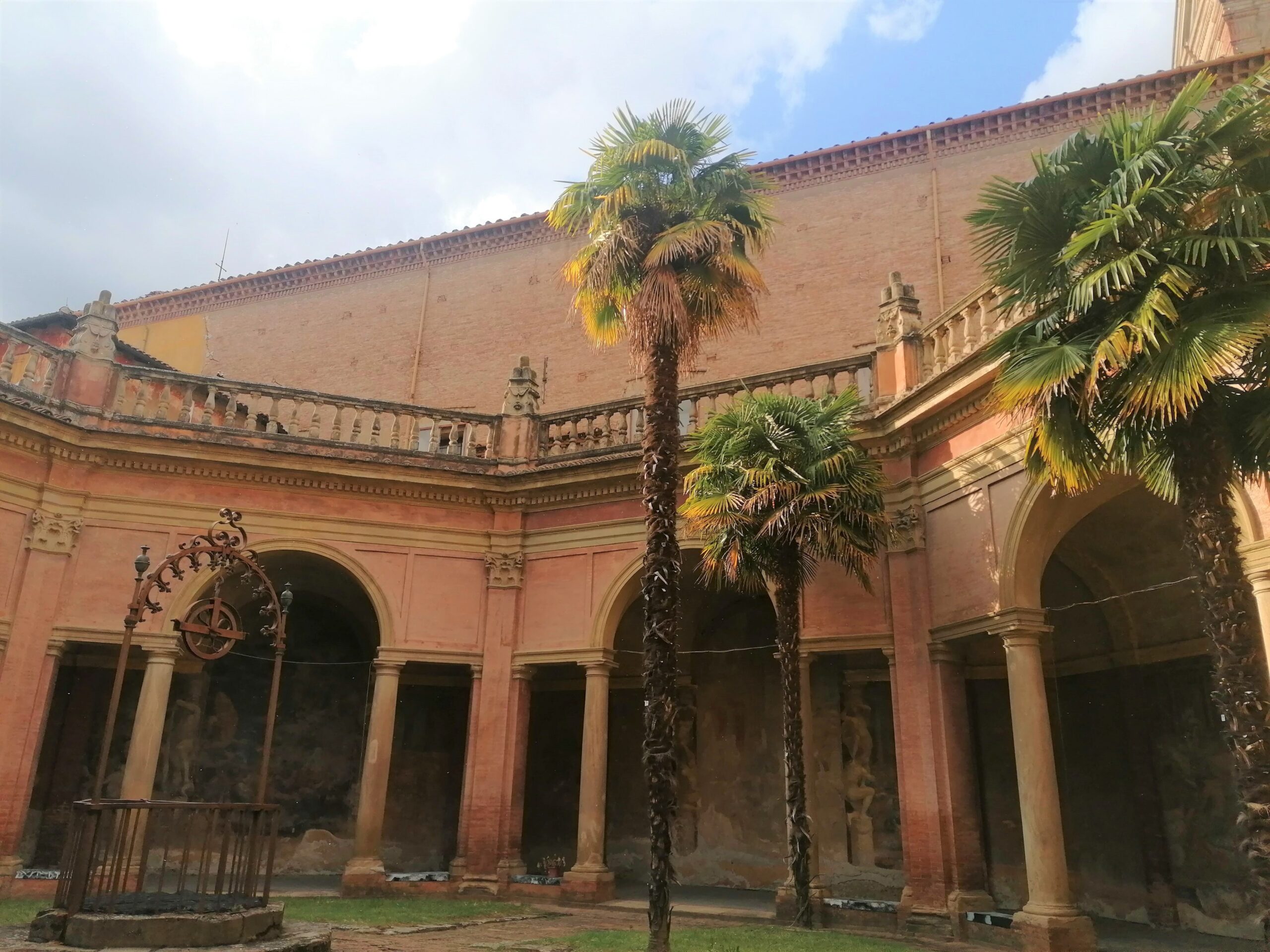
Piazza Maggiore - Quadrilatero
The city is full of life both during the day and at night, with its many taverns, theatres, book-stores, squares and shops. In the charming small streets close to Piazza Maggiore, there is the lively and picturesque market of the Quadrilatero with shops of typical products. The most gluttonous visitors cannot miss the city's oldest or an aperitif in an old wine bar.
The historic center of Bologna is famous throughout Italy for the beauty of its monuments, squares and towers, built in the typical Medieval or Renaissance style.


Bologna by Night
Via Zamboni is the heart of the university area of Bologna, bordered on both sides by ancient arcades. It is the way of knowledge, culture and art, overlooked by historic buildings and museums, meeting places both day and night, with a constant bustle of students, but also curious tourists who let themselves be carried away by this atmosphere.
In addition to being the road that connects the two Towers to Porta San Donato, Via Zamboni is home to Palazzo Poggi, the historic seat of the Alma Mater and the University Library, and some faculties, such as that of Arts and Cultural Heritage at number 38.
Bologna by Night
Via Zamboni is the heart of the university area of Bologna, bordered on both sides by ancient arcades. It is the way of knowledge, culture and art, overlooked by historic buildings and museums, meeting places both day and night, with a constant bustle of students, but also curious tourists who let themselves be carried away by this atmosphere.
In addition to being the road that connects the two Towers to Porta San Donato, Via Zamboni is home to Palazzo Poggi, the historic seat of the Alma Mater and the University Library, and some faculties, such as that of Arts and Cultural Heritage at number 38.

Although many criticize this area, we advise you to turn a blind eye and not stop at the surface. Via Zamboni is a very lively city area, where you can touch the frenzy and enthusiasm of student life, observing young people moving from one building to another with their backpacks on their shoulders and books under their arms, where to stop to grab a bite for a quick lunch and where to enjoy a beer or a spritz at aperitif time to relax after a long day.
Bologna's gastronomic tradition is linked to the University: the fact that there were so many students and professors of different nationalities made it necessary to enrich gastronomy and raw materials.
La Grassa
Bologna The Fat ("La Grassa"): this, along with red and learned, is one of the three appellations bestowed on the city of Bologna. Bolognese cuisine is known for its opulence and variety and is synonym for food & wine tradition.
Mortadella, “ragù alla Bolognese”, handmade pastas such as tortellini, lasagne and tagliatelle, boiled meat, certosino cake: these are only some of the foods that have made Bologna's gastronomy famous throughout the world, together with the fabulous “sfogline” (women making handmade pastas) whose lessons are attended by visitors from every country in the world. Colli Bolognesi DOC wines are famous too, like the typical Pignoletto.
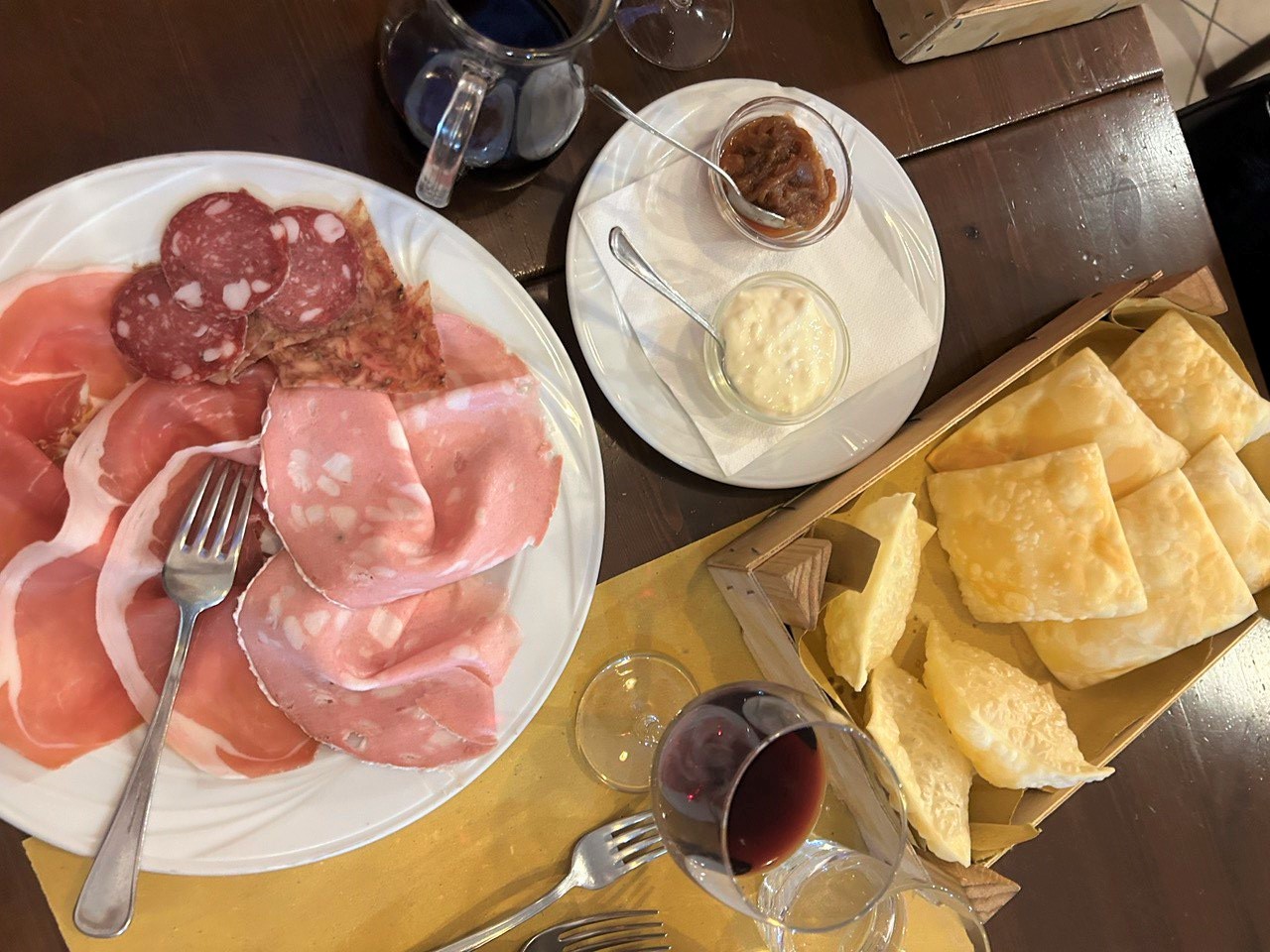

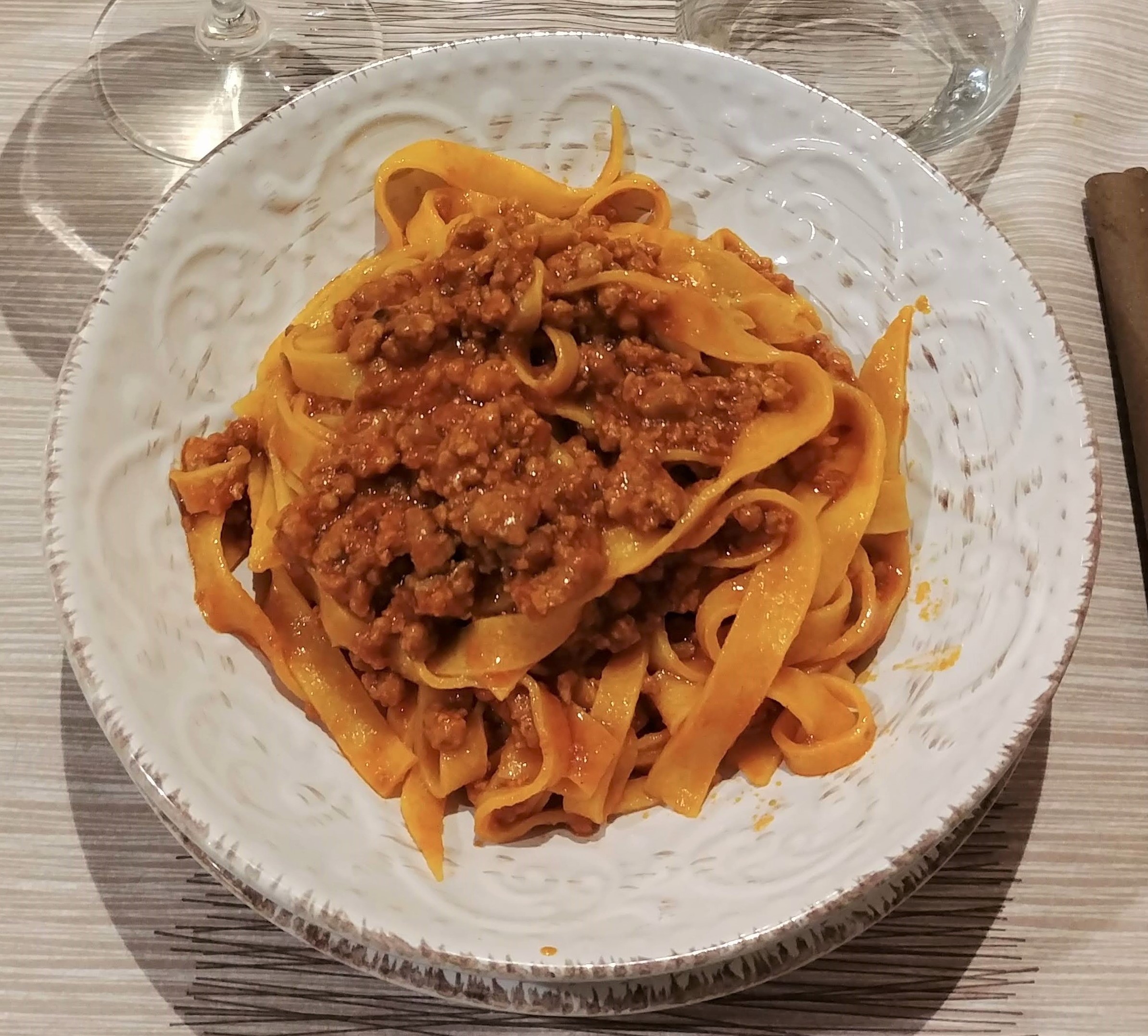
Motor Valley
Bologna is located in the heart of the Motor Valley, a territory imbued with a passion for motors and adrenaline-fueled adventures. Its scenic roads attract motorcyclists and motorists seeking thrills, with numerous locations hosting themed gatherings. The area offers vacation packages that include visits to famous museums of automotive and motorcycle brands such as Ferrari, Lamborghini, and Ducati, as well as courses on safe driving and other motor-related activities.
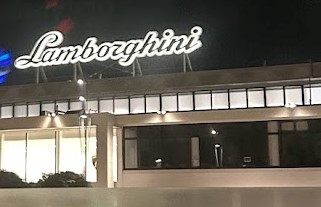
How to arrive
Bologna is strategically located with excellent connections to major Italian and European cities. There are several options for reaching the city: by plane, train, or bus.
The BLQ "G. Marconi" International Airport offers daily connections to 107 destinations. The city is linked to the airport via the Marconi Express, a modern and eco-friendly monorail shuttle that reaches the city center in just 7 minutes.
The main railway station, Bologna Centrale, is located near the city center, at the end of Via Indipendenza. The underground part of the station is dedicated to high-speed trains, while the upper part serves regional trains. Piazza Maggiore is just a 15-minute walk from the station.
Taking the bus is another convenient option to reach Bologna. The bus station is close to the railway station, with buses connecting the city to numerous national and international destinations.
For getting around the city, Bologna is a "human-sized" city with a compact historic center, making almost everything accessible on foot. Since there is no subway, the TPER bus system is an efficient option for city travel. A single urban ticket costs 1.50 euros and is valid for 75 minutes. It can also be purchased directly on the bus, but at a slightly higher price, up to 2 euros. The city center and major attractions are easily reachable on foot, except for the Sanctuary of the Madonna di San Luca, located on Colle della Guardia.
Bologna City Guide


The Travel Department, due to a strong link with the territory of Bologna, is naturally involved in the enhancement of the city of Bologna and its province.
We operate in the field of tourist reception in Emilia Romagna and particularly in our city, directly organizing and managing all the services necessary to build a quality stay, both for individuals and groups of Italian and foreign tourists.
We carefully select our suppliers, from hotels, transportation, restaurants, to tour guides.
Korilù eventi offers itself as a consultant in the search for venues for events in Bologna and to take care of their execution at every stage. We manage hotel reservations during major trade fairs and sporting events in Italy. We have room allotments on major Hotels in Bologna even during large fairs that fill the city. We provide quotes for pre-arranged groups for accommodation, guides, bus and car rental with driver.
For more information and reservations you can contact us at
+39 051 387615
E-mail: info@korilu.it
